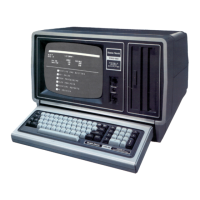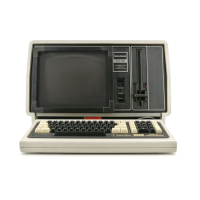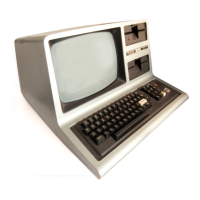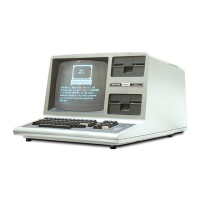Specifying NUM2 overrides the 80-character printer filter and
PROGRAM1 defaults. The values of C and
P1
are automatically set
with the IIASSIGN tokens inside the IIIF conditional block.
Another use for substitution fields
is
replacing drive numbers.
The following example shows how a FORMAT and BACKUP
JCl
file
can
be
structured:
•
FB/JCL,
FORMAT
with
BACKUP
IIPAUSE
Insert
disk
to
format
in
drive
#0#
forfrlat
:#0#
(narrle="datal"
,"I=n ,ABS)
bacf;up
:#S#
:#0#
IIE>(IT
The token 0 represents the destination drive, and the token S
represents the source drive.
If you enter the command:
00
FBI
JCL
(S=
1
,0=2)
(ENTER)
the system pauses and prompts you to insert a disk
in
Drive
2.
Press
(ENTER)
and
the
JCl
file continues.
It
formats the disk
in
Drive
2,
and then it executes the backup command with Drive 1 as the source
drive and Drive 2
as
the destination drive.
The substitution fields
can
be
used
in
message lines and comments
as well
as
in
executable command lines.
Be
careful when you want to display a single
"#"
in
a comment or
message. Consider the following example:
IIPAUSE
Insert
a
disk
in
drive
#1
If
the
JCl
file were executed only, this line would be properly
displayed. However, if the
JCl
were compiled,
an
error would occur.
For this line to be properly displayed
in
a compiled
JCl,
it would have
to
be
written
as:
IIPAUSE
Insert
a
disk
in
drive
##1
Another practical use for substitution fields
is
copying password
protected files from one drive
to
another.
• MOVE/JCL
file
transfer
COpy
profram1.#P#:0
:#0#
COPY
profram2.#P#:0
:#0#
COPY
profram3.#P#:0
:#0#
COPY
profram4.#P#:0
:#0#
IIE>(IT
In
this example, a group of files
is
copied from Drive 0
to
a drive
specified
in
the
DO
command. Also, you have to supply the proper
A-22
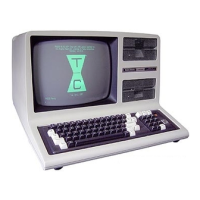
